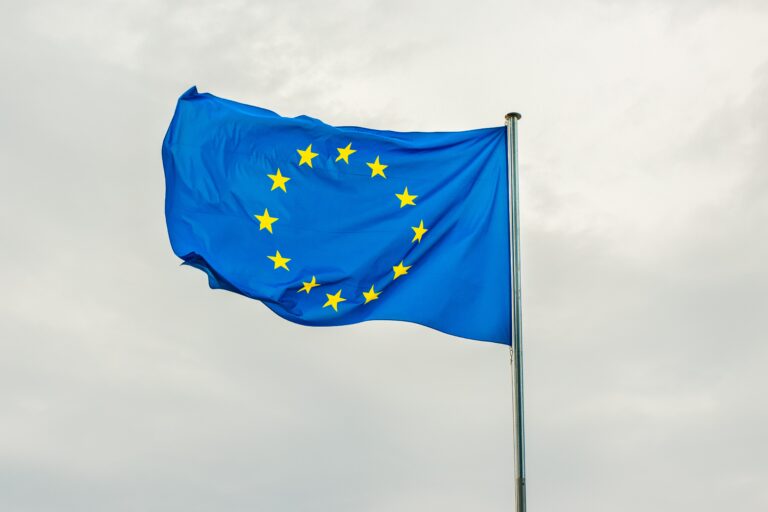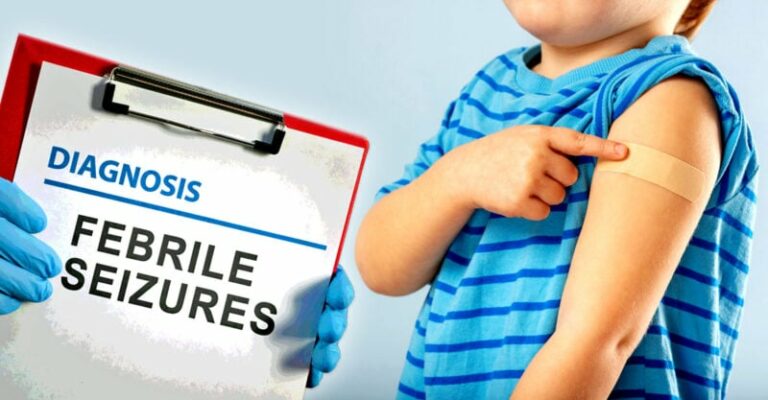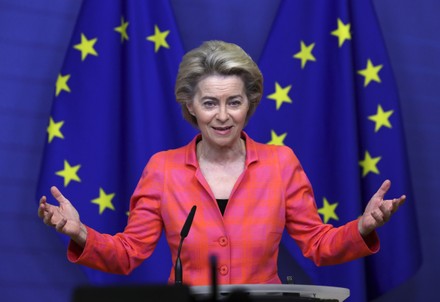Increase in Miscarriages, Stillbirths Directly Linked to COVID Shots, Data Show — Health Officials ‘Should Have Known’
This article was originally published by The Defender — Children’s Health Defense’s News & Views Website.
In groundbreaking research presented Wednesday, statistician and Luzern University professor Dr. Konstantin Beck said data show miscarriages and stillbirth rates in 2022 corresponded directly to COVID-19 vaccination among pregnant women in Switzerland nine months earlier — and vaccine makers and public health officials either knew or could have known this information at the time.
A major increase in spontaneous abortion among pregnant women was directly linked to the rollout of the COVID-19 vaccine in Switzerland, according to a new analysis by statistician and Luzern University professor Dr. Konstantin Beck.
Beck, a former adviser to the German Minister of Health and the Swiss Parliament, analyzed publicly available Swiss and German data from scientific publications, health insurance companies and the Swiss Federal Office of Statistics (FOS).
He found that miscarriages and stillbirth rates in 2022 corresponded directly to COVID-19 vaccination among pregnant women in Switzerland nine months earlier.
And, he said, vaccine makers and public health officials either knew or could have known this information at the time, if they cared to look. Instead, they presented the information to the public in a way that obscured the risks.
Beck presented his groundbreaking research findings on Wednesday to Doctors for Covid Ethics.
Also, contrary to public statements by Swiss authorities that, “There is no relevant excess mortality among young people ” in Switzerland, Beck’s re-examination of the government’s own data reveals significant patterns of excess mortality among young people emerged in late 2021 and early 2022.
He said these findings show that during the COVID-19 pandemic, “We exposed the most vulnerable unnecessarily to new risks that outweigh by far the original pandemic risk.” And that “today, more and more heavy consequences of our Corona measures pop up in our official statistics, but only a few are interested to know [about them].”
“By analyzing the rollout of these vaccines, especially for pregnant women and their unborn, I found plain evidence from the very beginning that rethinking and postponing the vaccination strategy would have been imperative,” he said.
COVID shots led to ‘the baby gap’
Switzerland saw a historic drop in the rate of live births in 2022.
Every month that year, there were fewer births than there had been on average over the previous six years, for an overall reduction of 8.5% in the national birth rate, according to Beck’s analysis.
In some places, the drop was even more significant — Zurich had a 16.5 % drop in its birth rate.
The last comparable drop in births, 13%, Beck said, was during the 1914 mobilization of the Swiss Army at the start of World War I, when most young men went off to fight the war.
The 2022 plummet in birth rates came on the heels of a small “Corona baby boom” — a 3% spike in birth rates in 2021, that had followed the pandemic lockdown.
According to data compiled by analyst Raimund Hagemann, COVID-19 vaccination rates among Swiss women in 2021 and early 2022 corresponded very closely to the drop in birth rates nine months following vaccination.
Figure 1 (below), which adjusts the birth rate timeline by nine months to account for the time of pregnancy, shows this strong correlation between rates of vaccination and decline in the birth rate — the two numbers mirror one another.

Researchers have offered a few different hypotheses for this “baby gap,” which Beck evaluated.
Some proposed a behavioral explanation, hypothesizing that people changed their behavior out of fear associated with the pandemic itself or the associated economic uncertainty.
But Beck said this hypothesis did not match historical behavior patterns — the baby boom itself happened in the middle of World War II. And, it can’t account for the baby boom that followed the beginning of the pandemic, when public fear and unemployment were both at their height.
He also dismissed the hypothesis that COVID-19 infection reduced fertility. If that were the case, he said, there would not have been a 2021 spike in the birth rate following the first wave of infection in 2020, and there was no evidence of reduced fertility following the Omicron virus wave.
In fact, Beck said, there is no evidence of reduced fertility at all. On the contrary, the data show women were becoming pregnant at the same rates as before the pandemic.
Using German health insurance data — because Swiss data are not yet available — he showed the number of women seeking pregnancy tests and visiting doctors to be treated for pregnancy remained constant throughout 2021 and 2022.
There was even slight ongoing growth, and a spike related to the mini-baby boom of 2021.
That makes COVID-19 vaccine-induced spontaneous abortion the most plausible hypothesis for the drop in birth rates — because the same number of women were becoming pregnant, but fewer of them were carrying their pregnancies to term.
Supporting that claim, data from German health and Swiss insurers show that beginning in the fourth quarter of 2021, there are clear and significant increases in the number of pregnancy complications treated and in the length of hospital stays following birth — both of which had been trending downward for years.
German data also indicate that the number of stillbirths was up 20% in the fourth quarter of 2021.
Although data on stillbirths were not available for Switzerland, he said, there is no reason to believe that it would be substantively different.
‘Anyone who had read the leaflet, would have been informed’ of dangers
The vaccines’ impact on pregnancy was not simply a tragic and unanticipated outcome, because it was already evident in the vaccine manufacturers’ own data or lack thereof, Beck said.
Anyone who had “read a leaflet from the manufacturer,” he added, “would have been informed” that there were no pregnancy data, but that there were serious concerns about the possible effects of vaccines on infants.
The German version of the Moderna Spikevax warning said, essentially, “We have no clue what the risk is for pregnant women. There are no good controlled studies done. There is not enough data available,” Beck said.
The leaflet also recommended against vaccination for breastfeeding mothers, but strongly recommended it for pregnant women, Beck said.
“But isn’t pregnancy usually preceding breastfeeding?” he asked, “And what should you then do after giving birth to get rid of vaccination?”
On April 20, 2021, Pfizer sent its report regarding the mRNA vaccine and pregnancy to the Centers for Disease Control and Prevention (CDC), according to the Pfizer documents.
The following day, the New England Journal of Medicine (NEJM) published preliminary findings on COVID-19 vaccine safety in pregnant women based on an analysis of V-safe and the Vaccine Adverse Event Reporting System (VAERS).
On April 23, in a White House press conference, CDC Director Rochelle Walensky recommended pregnant women get vaccinated based on the findings of that paper.
The paper explicitly stated that researchers found no safety signals with respect to pregnancy or neonatal outcomes in the third trimester, but that it could make no conclusions about the first or second trimesters.
Given that the first and second trimesters are the highest risk periods for pregnancy, Beck said, the NEJM paper concedes the researchers didn’t know what additional risks the vaccines might pose to pregnant women at their most vulnerable time.
The paper also included an irrelevant comparison of the most frequent symptoms post-vaccine between pregnant and non-pregnant women, and used live birth as the only measure of the potential health effects on the newborn.
And perhaps most importantly, it explicitly stated that “The most frequently reported pregnancy related adverse events were spontaneous abortion.”
The paper reported 46 spontaneous abortions related to vaccination out of 104 total reported. That, Beck said, is a 73.1% increase in spontaneous abortion.
Making calculations based on that NEJM data, Beck found at the reported vaccination rate of 75% of pregnant women in Switzerland, 1 in 10 pregnancies ends in a miscarriage or stillbirth.
He concluded that alternative existing hypotheses can’t account for this phenomenon, and the vaccine-induced miscarriage hypothesis corresponds to both the manufacturer’s data and the relevant findings reported as the basis of the CDC’s campaign to vaccinate pregnant women.
125% spike in pulmonary embolism, cardiac arrest and stroke, and cerebral infarction among children ages 0-14
The presentation also raised a series of concerns about the impacts of COVID-19 vaccination on young people and how statistical manipulation can obscure those potential effects.
Based on several examples of how the health and mortality of young people worsened over the course of the vaccination period, Beck posed the question, “Why did we vaccinate children? I mean, they were not the target group of this virus.”
An examination of data from major health insurers, for example, showed that during 2020-2021, people ages 19-39 had the highest growth in healthcare costs, while they typically have the lowest costs, indicating a change in the health of that demographic.
Data on the frequency of pulmonary embolism, cardiac arrest and stroke, and cerebral infarction among children ages 0-14 showed a 125% spike in events. While the numbers were still small, they went from an average of 20 events per year over the several preceding years to a total of 45 events in 2021.
A second look at data analysis by the FOS, which had reported that there was no excess mortality for young people in 2022, raised red flags, Beck said.
Excess mortality measures the difference in reported deaths versus expected deaths in a given period. Baseline projections of excess mortality are typically based on previous averages.
Re-analyzing the FOS mortality data, but keeping the expected number of deaths in line with previous averages — which the FOS had not done — Beck found a 12% increase in overall excess mortality.
When he analyzed the excess mortality by age groups, Beck found that for young adults ages 20-39, there was a spike in excess mortality beyond normal expectations in late 2021 and in 2022. And for children ages 0-19, he identified a similar trend.
Excess mortality data, he said, can be easily hidden by widening confidence intervals for predictions, combining demographic groups with different health profiles or changing the baseline expected number of deaths to hide variation, which made it possible for Swiss officials to announce there was no excess mortality for young people.
This article was originally published by The Defender
Suggest a correction






